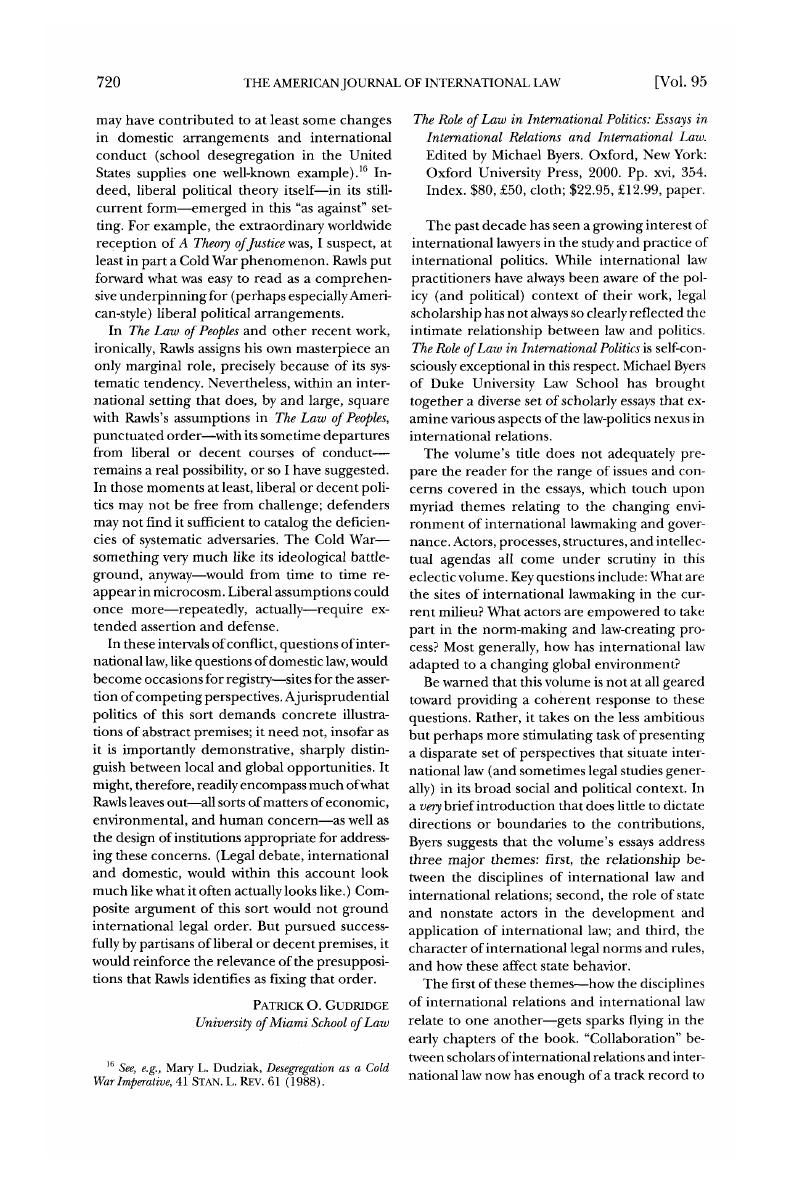No CrossRef data available.
Published online by Cambridge University Press: 06 June 2017

1 See Anne-Marie, Slaughter Burley, International Law and International Relations Theory: A Dual Agenda, 87 AJIL 205 (1993)Google Scholar.
2 See Kenneth, W. Abbott, Modern International Relations Theory: A Prospectus for International Lawyers, 14 Yale J. Int’l L. 335 (1989)Google Scholar; Anne-Marie Slaughter, Andrew S. Tulumello, & Wood, Stepan, International Law and International Relations Theory: A New Generation of Interdisciplinary Scholarship, 92 AJIL 367 (1998)Google Scholar.
3 For earlier statements of Kratochwil’s views of the proper approach to integrating law into international relations, see Friedrich Kratochwil & John Ruggie, Gerard, International Organization: A State of the Art on an Art of the State, 40 Int’l Org. 229 (1986)Google Scholar.
4 See the extended explication he presents in Rules, Norms, and Decisions: on The Conditions of Practical and Legal Reasoning in International Relations and Domestic Affairs (1989).
5 See, e.g., Kenneth W. Abbott & Snidal, Duncan, Why States Act Through Formal International Organizations, 42 J. Conflict Resol. 3 (1998)Google Scholar.
6 See, e.g., Engaging Countries: Strengthening Compliance with International Environmental Accords (Edith, Brown Weiss & Harold, K. Jacobson eds., 1998)Google Scholar.
7 Slaughter, Tulumello, & Wood, supra note 2.
8 See, e.g., Beth, A. Simmons, International Law and State Behavior: Commitment and Compliance in International Monetary Affairs, 94 Am. Pol. Sci. Rev. 819 (2000)Google Scholar.
9 See Robert, O. Keohane & Nye, Joseph, Power and Interdependence: World Politics in Transition (1977)Google Scholar.
10 See Robert, O. Keohane, After Hegemony: Cooperation and Discord in the World Political Economy (1984)Google Scholar.